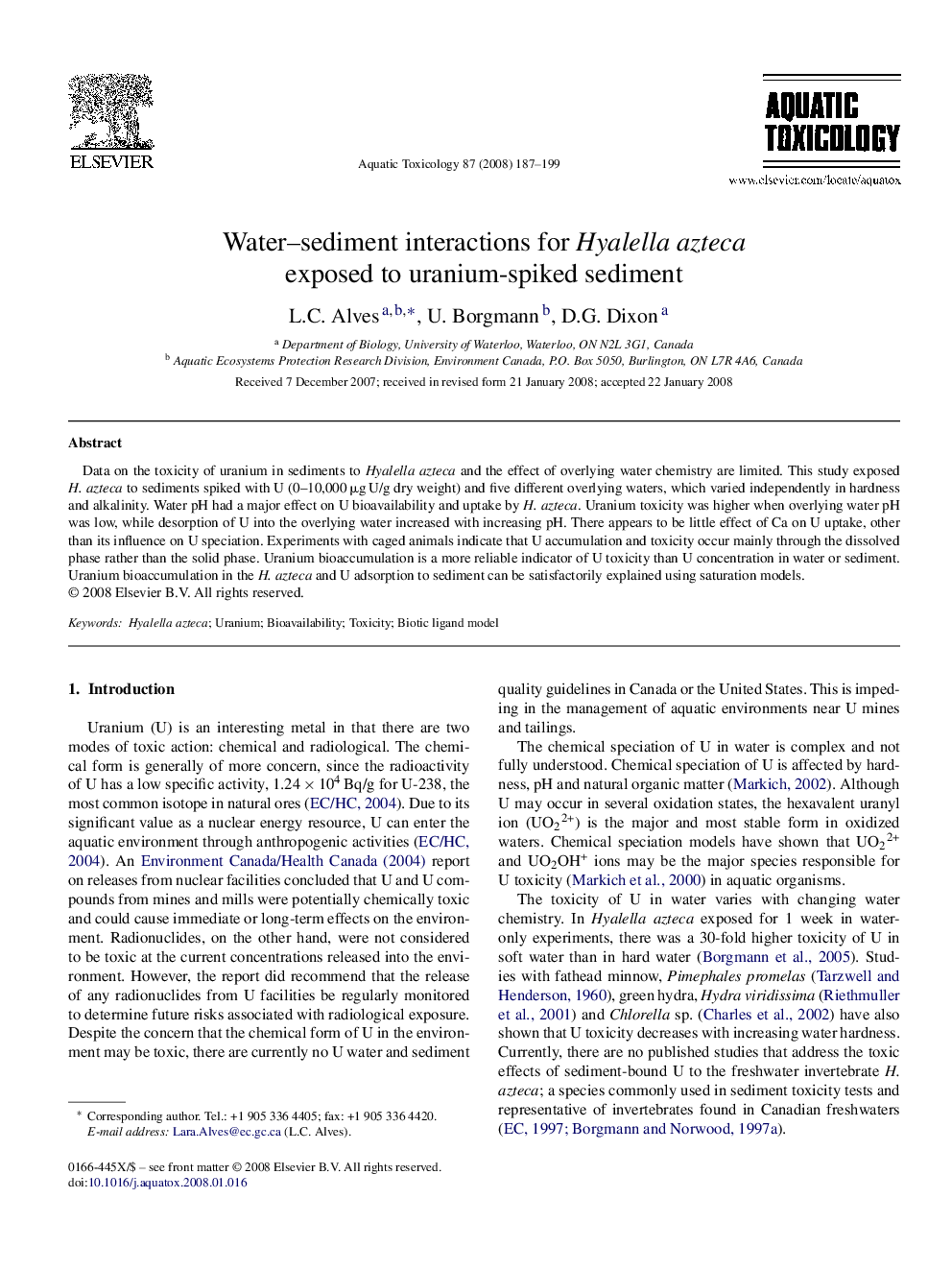| Article ID | Journal | Published Year | Pages | File Type |
|---|---|---|---|---|
| 4531010 | Aquatic Toxicology | 2008 | 13 Pages |
Data on the toxicity of uranium in sediments to Hyalella azteca and the effect of overlying water chemistry are limited. This study exposed H. azteca to sediments spiked with U (0–10,000 μg U/g dry weight) and five different overlying waters, which varied independently in hardness and alkalinity. Water pH had a major effect on U bioavailability and uptake by H. azteca. Uranium toxicity was higher when overlying water pH was low, while desorption of U into the overlying water increased with increasing pH. There appears to be little effect of Ca on U uptake, other than its influence on U speciation. Experiments with caged animals indicate that U accumulation and toxicity occur mainly through the dissolved phase rather than the solid phase. Uranium bioaccumulation is a more reliable indicator of U toxicity than U concentration in water or sediment. Uranium bioaccumulation in the H. azteca and U adsorption to sediment can be satisfactorily explained using saturation models.
